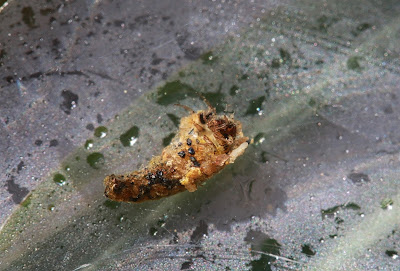I drove up to Entry Run in Greene County on Tuesday. Didn't see anything out of the ordinary, but I got some nice photos worth posting.
Above and below, brushlegged mayfly, Isonychia sp. (probably bicolor).
I still hope to find a nymph with single forecoxal gills -- not sure it's going to happen. All of the Isonychiidae I've found so far have a "cluster of filaments" at the forecoxae, meaning I can't ID them to the level of species. On this nymph, those gills show up in this live photo, no need to go to the microscope.
_________________
I wasn't at all surprised to see some of our winter casemakers, a Lepidostomatidae,
and a Thremmatidae (formerly Uenoidae), Neophylax consimilis.
__________________
And, to my surprise, I also found a spiny crawler, Ephemerella subvaria, the nymph of "many colors."
There was one odd thing about this one: the pointed tubercles on terga 5, 6, and 7 were pale colored.
I'm pretty sure that on the nymphs that I've found previously, those tubercles were all black. Strange. I plan to look into this. Probably just a local variation.



























